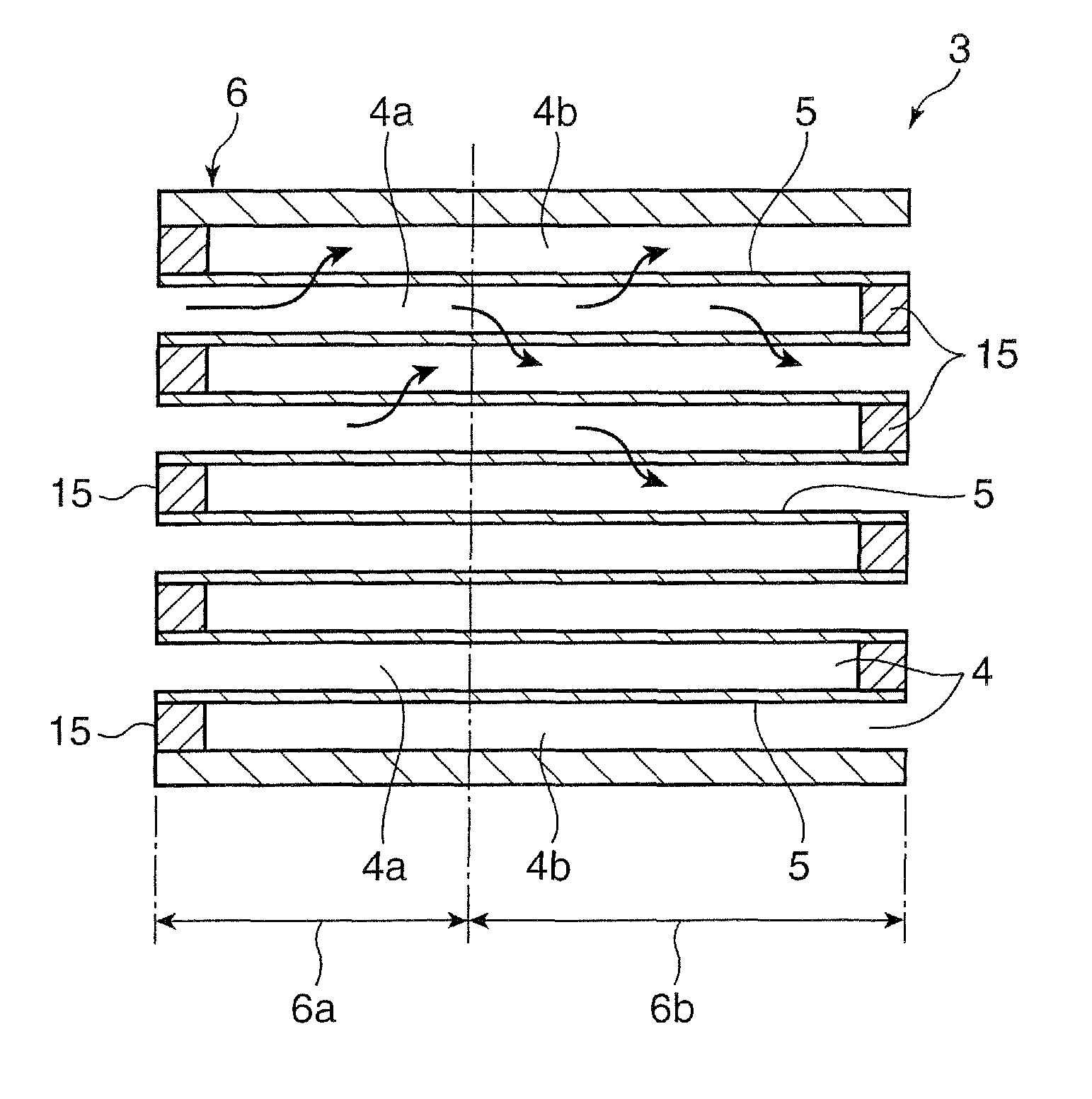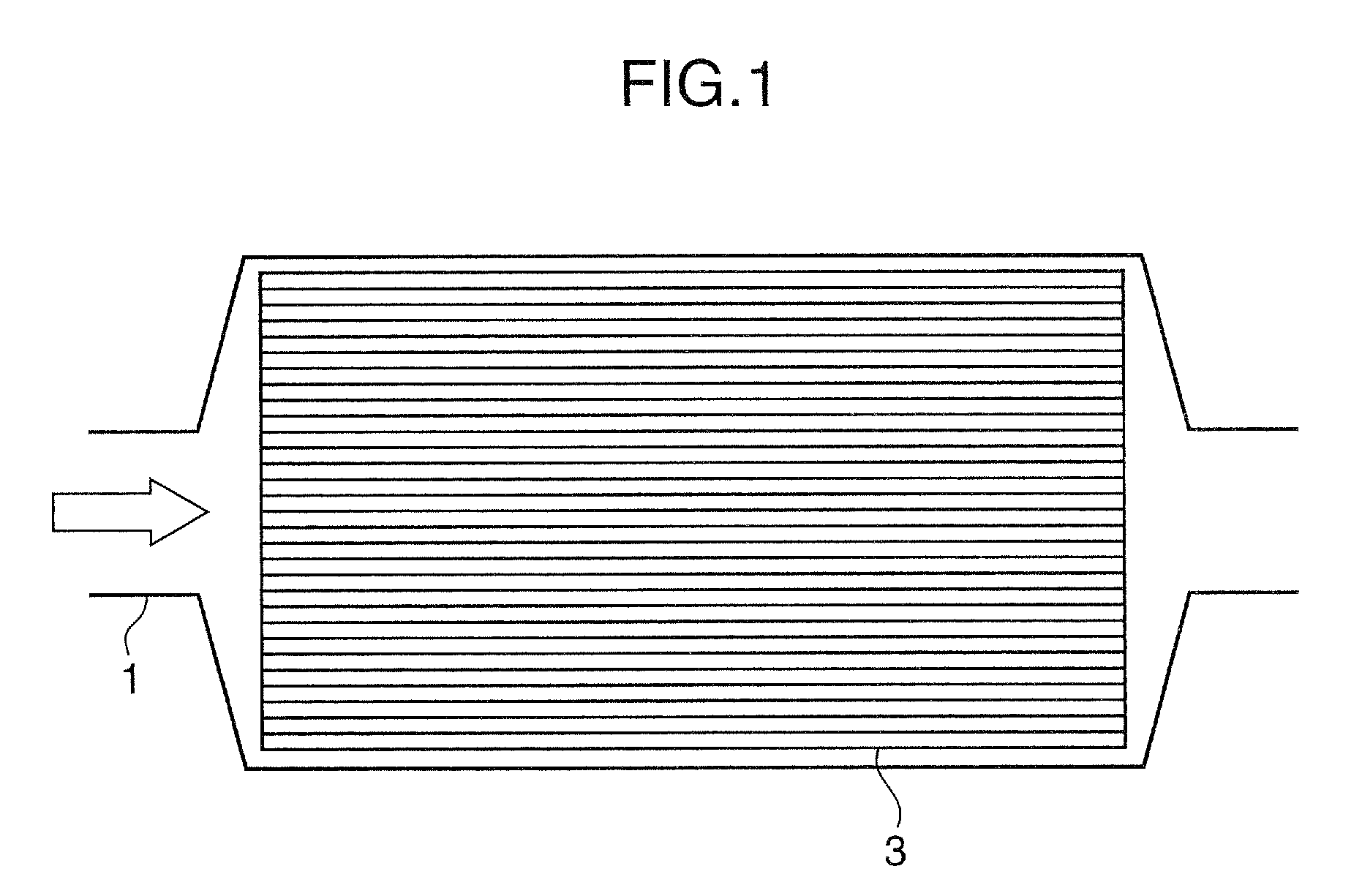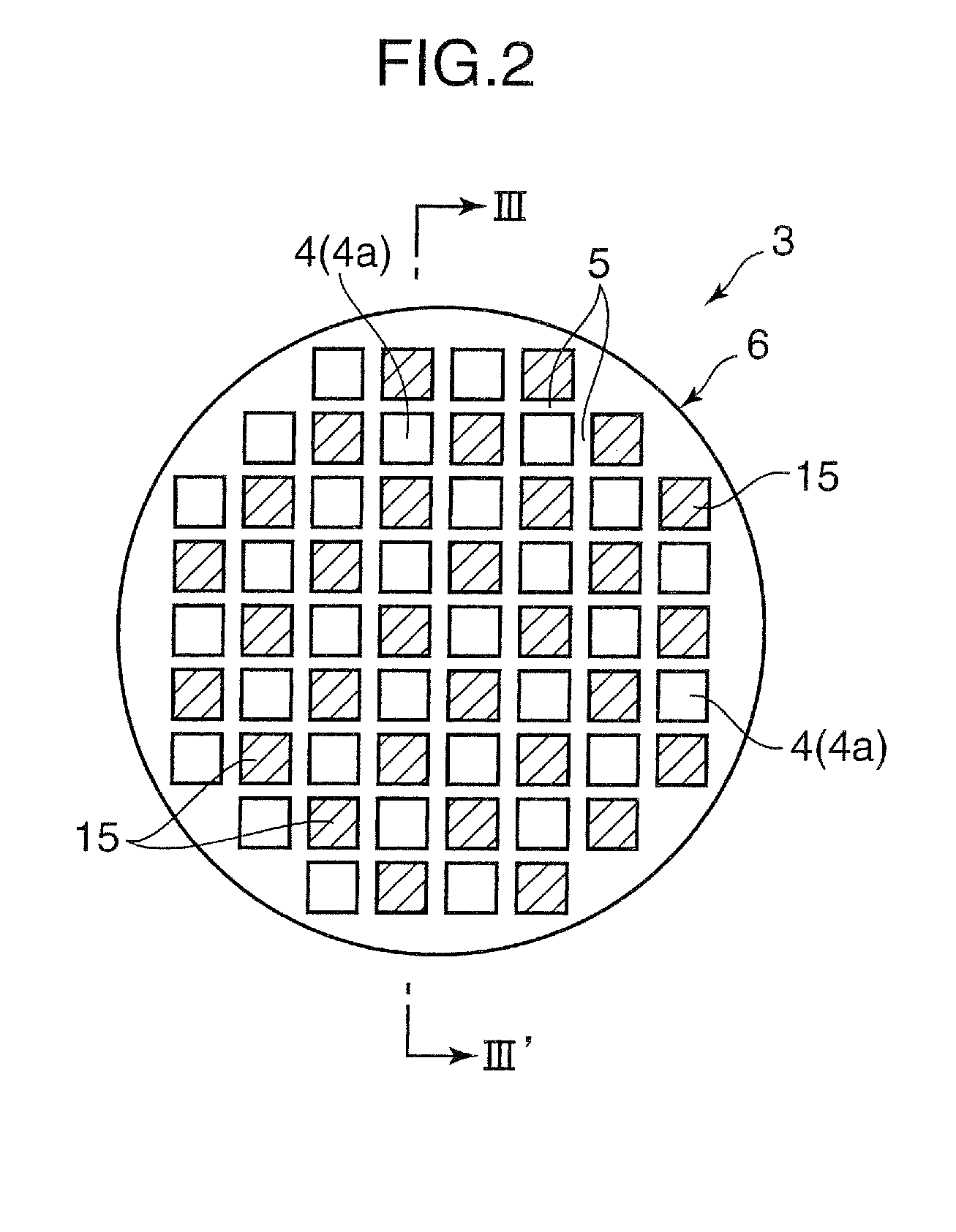Particulate filter
a technology of particle filter and particulate, which is applied in the direction of filtration separation, physical/chemical process catalyst, separation process, etc., can solve the problems of zr-based composite oxide being liable to be changed, reducing catalytic efficiency, etc., and achieves a higher burning rate, reduced catalytic efficiency, and high burning rate
- Summary
- Abstract
- Description
- Claims
- Application Information
AI Technical Summary
Benefits of technology
Problems solved by technology
Method used
Image
Examples
example
[0069]The present invention will be more specifically described based on Examples of the DPF 3 according to the above embodiment. It is understood that the present invention is not limited to the following Examples.
example a
[0070]An influence of a composition of a Zr-based composite oxide and / or a content ratio thereof on the PM burning rate was evaluated.
[0071]Firstly, a plurality of DPFs 3 different in a composition of a Zr-based composite oxide and / or a content ratio thereof were prepared in the following manner.
[0072]As a DPF substrate (filter body 6), a sample having a volume of 25 ml was cut out from a DPF substrate made of silicon carbide (SiC) and formed in a cell structure having a wall thickness (of a porous partition wall 5) of 12 mil, and a cell number of 300 cpsi (cells per square inch).
[0073]Then, a plurality of Zr-based composite oxides were prepared in such a manner as to have respective compositions and content ratios thereof as shown in Table 1. Each of the Zr-based composite oxides was obtained through a process of dissolving a given amount of a nitrate salt of each of required ones of a plurality of metal elements (Zr, Nd, Pr, La, etc.) in ion-exchanged water, dropping a basic solut...
example b
[0092]Further, the PM burning rate and others were evaluated using Zr-18Nd-18Pr and Zr-12Nd-18Pr.
PUM
| Property | Measurement | Unit |
|---|---|---|
| temperature | aaaaa | aaaaa |
| temperature | aaaaa | aaaaa |
| temperature | aaaaa | aaaaa |
Abstract
Description
Claims
Application Information
 Login to View More
Login to View More - R&D
- Intellectual Property
- Life Sciences
- Materials
- Tech Scout
- Unparalleled Data Quality
- Higher Quality Content
- 60% Fewer Hallucinations
Browse by: Latest US Patents, China's latest patents, Technical Efficacy Thesaurus, Application Domain, Technology Topic, Popular Technical Reports.
© 2025 PatSnap. All rights reserved.Legal|Privacy policy|Modern Slavery Act Transparency Statement|Sitemap|About US| Contact US: help@patsnap.com



